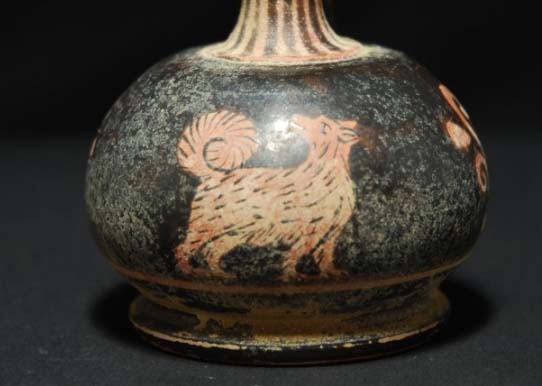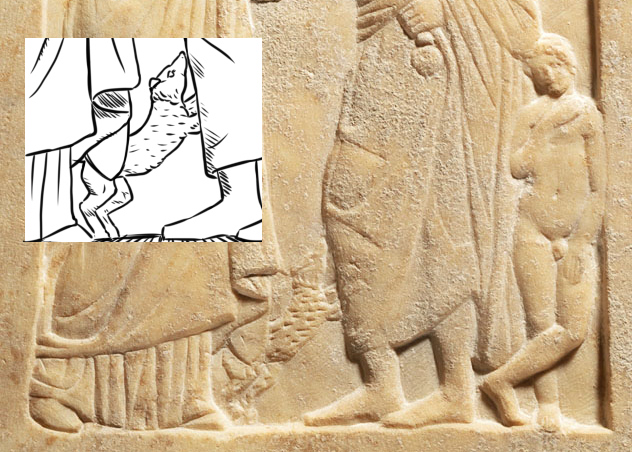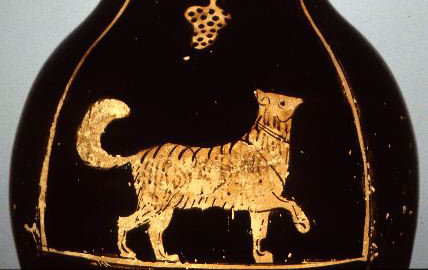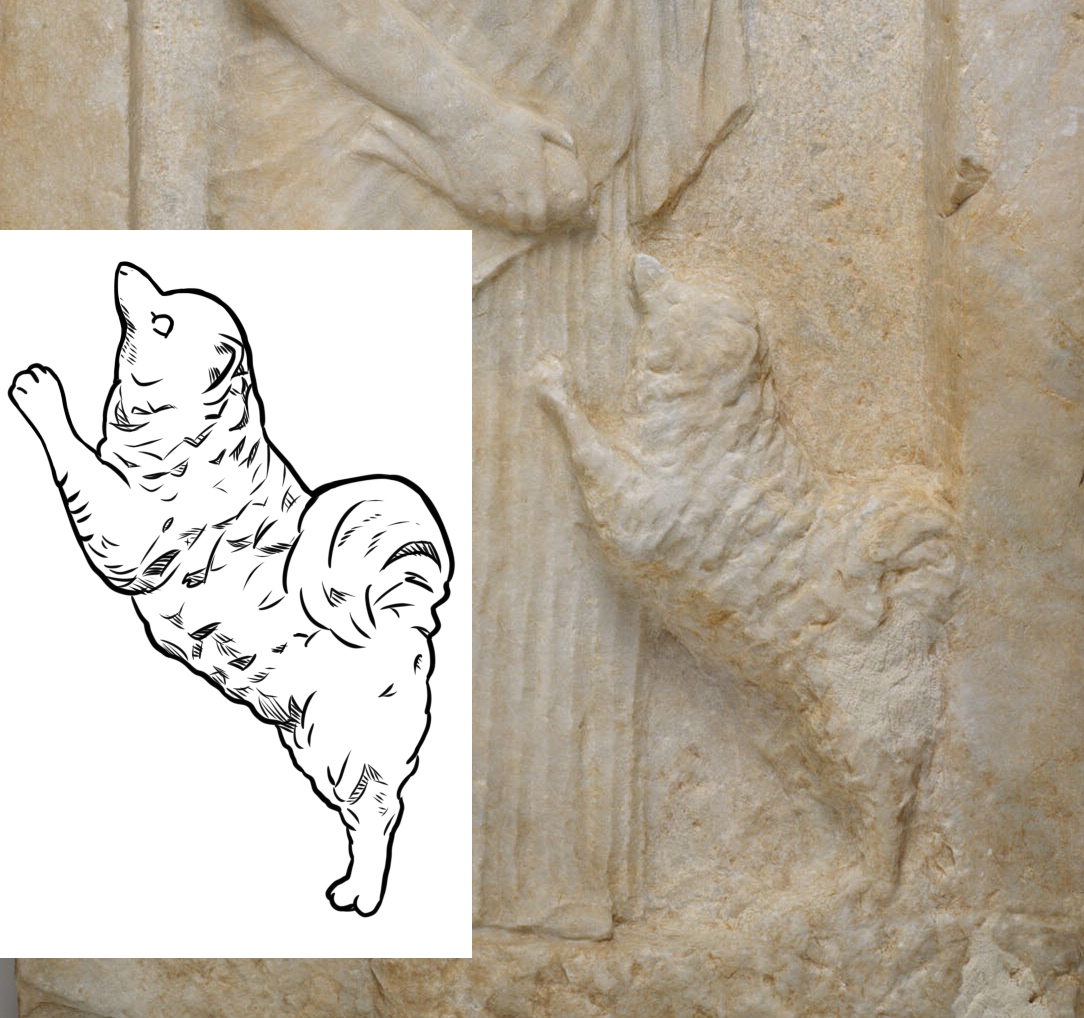Ancient Mediterranean
The first small dogs with no job show up in greek and roman vases and descriptions. They are called the “Melitaion” (or Melitaeus, if you speak latin) - a small, fluffy white dog owned by the aristocratic ladies. The name, which means “from Malta”, as well as the fur color makes it easy to draw a connection to the modern day breed “Maltese”, a mistake commonly seen among breed enthusiasts to declare their breed’s ancient history. This is however not accurate. Pictures and descriptions both tell us that a more accurate representation of the melitaion would be a Volpino Italiano or Japanese Spitz - a small white spitz dog, with fur that sticks out and a pair of small triangular, upright ears.
The maltese name is rather an example of how types of dogs both now and then were often called by the place name of where they were said to have originated, before being taken back home and interbred with the local stock. Another example is the still used “Spaniel”, meaning “From Spain”. We know that spaniels today are from Great Britain, but once upon a time there had been hunting dogs brought over from Spain that were used to breed with the local hunting dogs, letting their ancestry still live on in the exotic name. Yet, indeed, the long ears and fluffy coat that is synonymous with spaniels much more resembles the british hunting dogs than any type of dog native to spain.

Attic lekythos showing a maltese dog, 5th century BC.
Private collection H. S., Vienna.

Attic red-figure chous (miniature wine jug) showing a boy playing with a dog, second half of 5th century BC.
Museum of Fine Arts, Boston.

"Marble fragment of a stele (grave marker) of a youth", mid-4th century BCE.
Met Museum of Art, NY, USA.

Attic red-figure showing maltese dog with grapes, 450-435 BC.
University Museum, University of Pennsylvania.

Detail from greek stele (grave marker)of a young girl “Melisto”, c. 340 bc.
Harvard University of Fine Arts

Roman terracotta figure of a fluffy, short-legged dog. 1st century BC.
British Museum, London.





